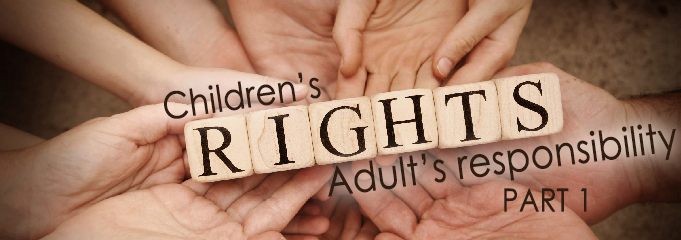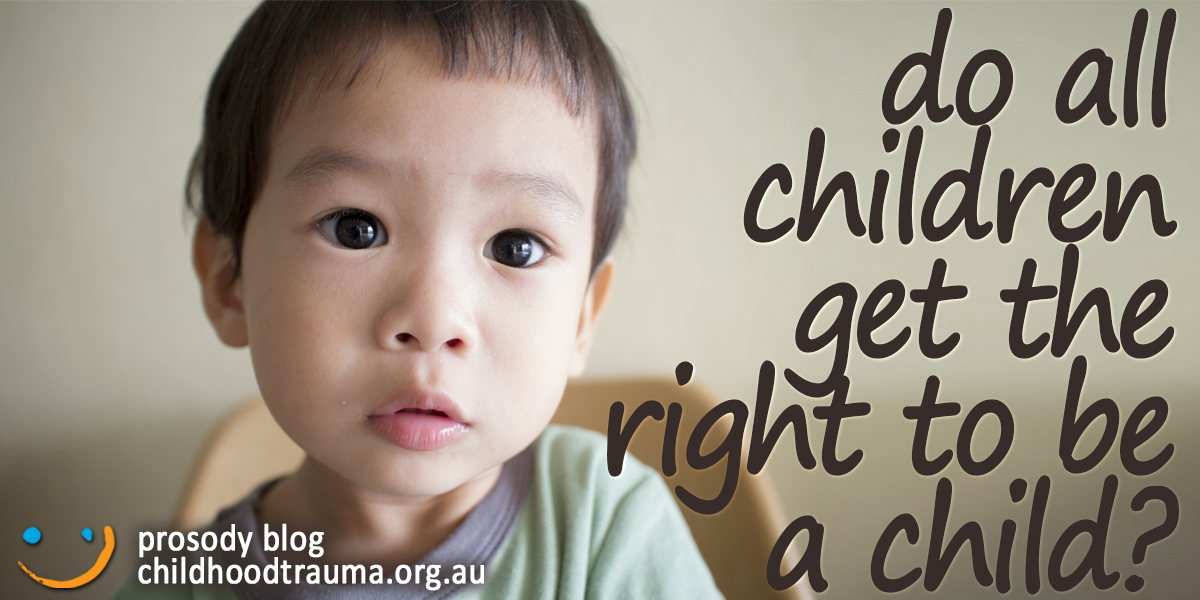
Children’s rights, adult’s responsibility. Part 1
This article was authored by Pat Jewell, Team Leader,
Parenting Education and Support Program, at the Australian Childhood Foundation.
Todays entry marks the first in a three part series that will be published over the next three months looking at Children’s Rights. We hope the series helps you explore the topic and reflect on the role of us as adults in children accessing and experiencing these rights as they engage in their world.
The 1989 United Nations Convention on the Rights of the Child (UNCRC) is the United Nations endorsed convention that outlined the rights of children across the world to a series of provision, protection and participation rights. The UNCRC defines a child as a human being under 18 years. The status of the 1989 UNCRC, as a human rights treaty, is unprecedented as it has been signed by a record 61 UN countries leaving only two member states to still ratify, the USA and Somalia. (Coady and Page, 2005).
 Australia is a signatory to the 1989 UNCRC and as such all adults have the responsibility to ensure that all children they are in contact with in any capacity know of these rights and accesses them.
Australia is a signatory to the 1989 UNCRC and as such all adults have the responsibility to ensure that all children they are in contact with in any capacity know of these rights and accesses them.
The 1989 UNCRC is made up of 40 separate rights divided into provision and protection rights and the most controversial category –participation rights.
Are you aware of the 1989 UNCRC? Here is a useful link to help you familiarise yourself with the 40 children’s rights contained in the 1989 UNCR: http://www.ohchr.org/en/professionalinterest/pages/crc.aspx.
This convention is complicated on many levels but this blog will reflect on two:
Firstly the recipients of these rights (human beings under 18 year) do not automatically know that this convention exists and they have entitled access to their rights. It is not included in the bag of goodies new parents receive and babies don’t get their own bag!
Secondly as is obvious from the first complication –children rely on a third party (adults) to support and enable them to access their rights. The 1989 UNCRC is the only convention that “includes provisions that recognise the legitimate influence, indeed right, of 3rd parties on the exercise of another individual’s rights” (Tobin 2011, p 72)
Across Australia there is a general acceptance of children’s rights to the provision and protection of children. The 1989 UNCRC is the underlying philosophy of many policies and protocols in education, family support, child protection and early childhood services. Although we know that tragically this is not every child’s reality.
What does this mean for us, the adults entrusted with the responsibility to make sure children access these rights?
Within our individual professions and parenting roles what does this responsibility look like for us?
What do these rights look like for the children in our care?
REFERENCE:
Coady, M., Page., J (2005). “Continuing Commitments: the early childhood sector and the United Nations Convention on the Rights of the Child.” International Journal of Equity and Innovation in Early Childhood 3(2): 46-53.
Tobin, J. (2011). The Human Rights of Children: From Visions to Implementation. Invernizzi, A., Williams, J., Ed. U.K., Ashgate Publishing Limited.
